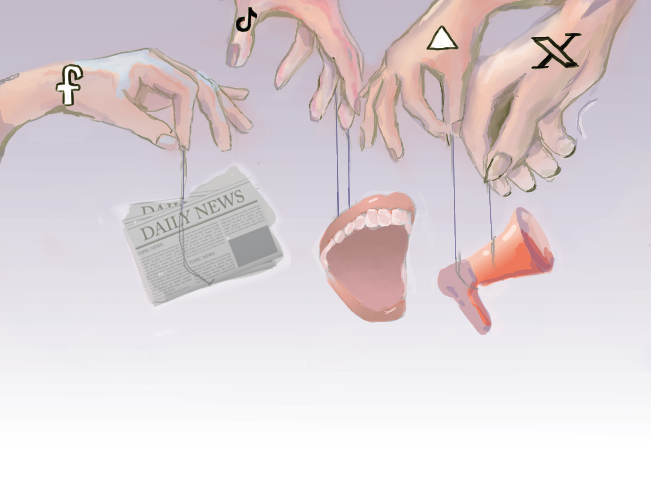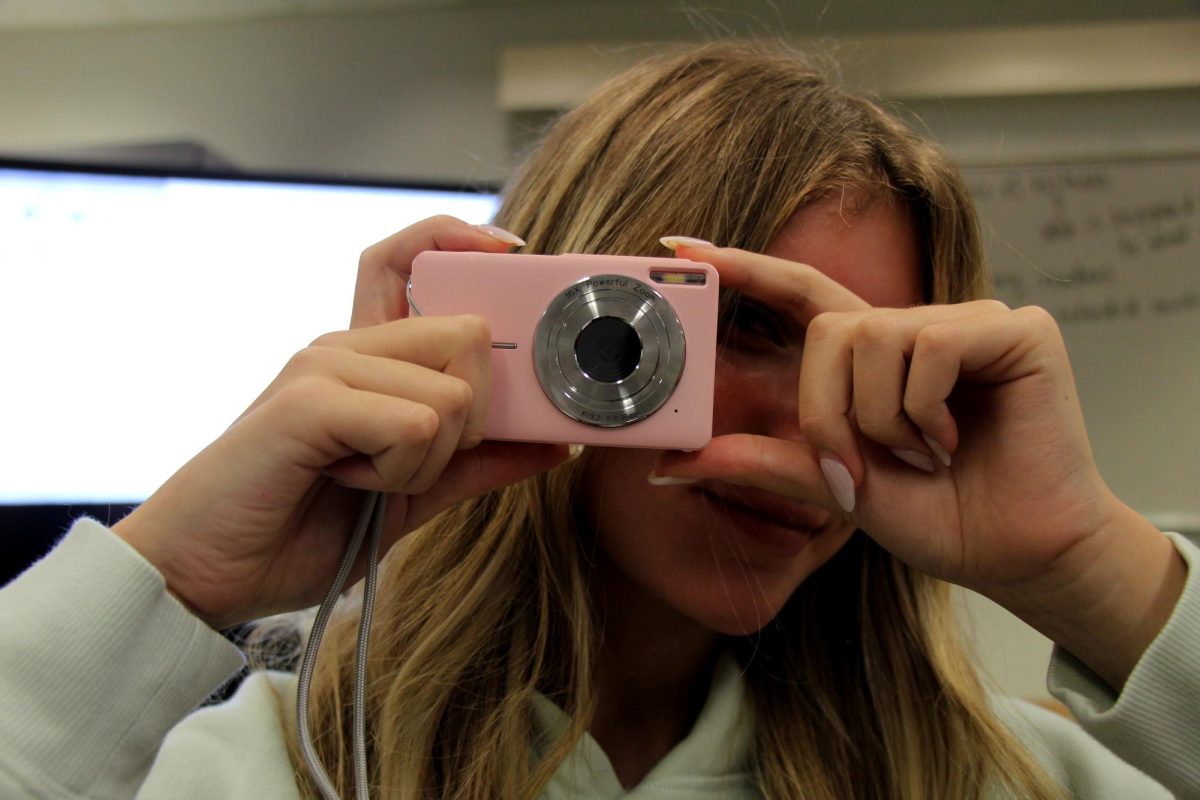
Cell phones have been around since the 1970s and have advanced in many different aspects. Artificial Intelligence assistants, touchscreens, advanced displays and professional-quality cameras are just a few common examples of the technology we use on our phones today.
79% of the teenage population in the United States claims to use social media, which can be a huge distraction in their lives. Apps like Instagram, Snapchat, Twitter and Tik Tok can act as barriers to students who are unable to focus on their school work.
In most schools, the use of phones is limited in classrooms. However, once the bell rings, students are able to have free use of their phones in-between classes, during lunch and before and after school.
Many schools do not rely on one singular policy to keep students off their devices. The rules for cell phone use can change from classroom to classroom, based on the teacher’s ruling. Some teachers require students to put their devices into a phone pocket hanging on the front of the desks, while other teachers simply ask students to leave the distracting technology in their backpacks.
“Like anything, it has its pros and cons. You can use cellphones for useful things such as quizzes in class, but it can also be a huge distraction. With self-control while using their cellphones I think it could be reasonable,” sophomore English teacher Kristen Coniff said.
According to a school-wide survey of 350 Marjory Stoneman Douglas students, 68.8% of students at MSD think cell phone usage should be allowed for in-class activity, while 31.2% think cell phones are distracting and should not be allowed.
Some schools prefer to ban the use of cell phones to prevent a diversion in the students’ academic life, while other schools have not enforced any strict rules. In most cases, teachers decide how they would like to handle the students on their cell phones.
In some classrooms, cell phone use may be excused if there is a legitimate academic purpose. Online tests and assignments have increased greatly due to increased accessibility for technology. One aspect of phones that is helpful in classes is the calculator app, an internet browser and the Kahoot app.
“Using my phone in class can sometimes be a distraction because I find myself getting off-topic or browsing around other things instead of doing my work. Getting notifications on my phone can also distract me because instead of doing my work or paying attention, I reply and eventually forget what I was supposed to do,” sophomore Maria Mantilla said.
If students are on their phones in class when they aren’t supposed to be, they can receive consequences, like detention, or having their phone taken for the rest of the class period.
In addition to classroom help, cell phones also have life-saving capabilities for students. These devices are able to make a call and deliver information to the police or contact a family member is an important situation. Without the use of cell phones during emergencies, serious injuries or problems can result.
“On February 14th when I was in hiding I was on my phone the whole time talking to my mom. I wouldn’t know what I would do if I did not have access to talking to her during hard times,” senior Romy Mader said.
According to research firm Campus Technology, 82% of high school students own a cell phone and 94% of them feel the urge to use it in class.
In moderation, cell phones provide many amazing benefits to students, some of which can even be used in classes to help further their education. It’s no argument that cell phones are important in this day and age, but it’s also important to recognize that they cause extreme distractions that draw a student’s focus away from schoolwork.









![National Honor Society Sponsor Lauren Saccomanno watches guest speaker Albert Price speak to NHS members. National Honor Society held their monthly meeting with Price on Monday, Nov. 4. "[Volunteering] varies on the years and the month, but we have started a couple new things; one of our officers Grace started a soccer program," Saccomanno said. "We have been able to continue older programs, too, like tutoring at Riverglades. NHS's goal is to have as many service projects as possible."](https://eagleeye.news/wp-content/uploads/2024/11/xNOeKNVwu7aErpVyJHrHogagZUUcLLosjtbIat94-1200x900.jpg)

![Ice Ice Baby. Skating to "Waltz" and "Romance" during her long program, figure skater Ava Zubik competes at the Cranberry Open in Massachusetts on Aug. 12, 2022. She scored a total of 86.90 on her short and free skate program, earning fifth place overall. "I try to make it [competing] as fun and enjoyable as I can because it's my senior year, and so I want to really enjoy competitive figure skating while it lasts," Zubik said.](https://eagleeye.news/wp-content/uploads/2024/11/skater1-799x1200.jpg)
